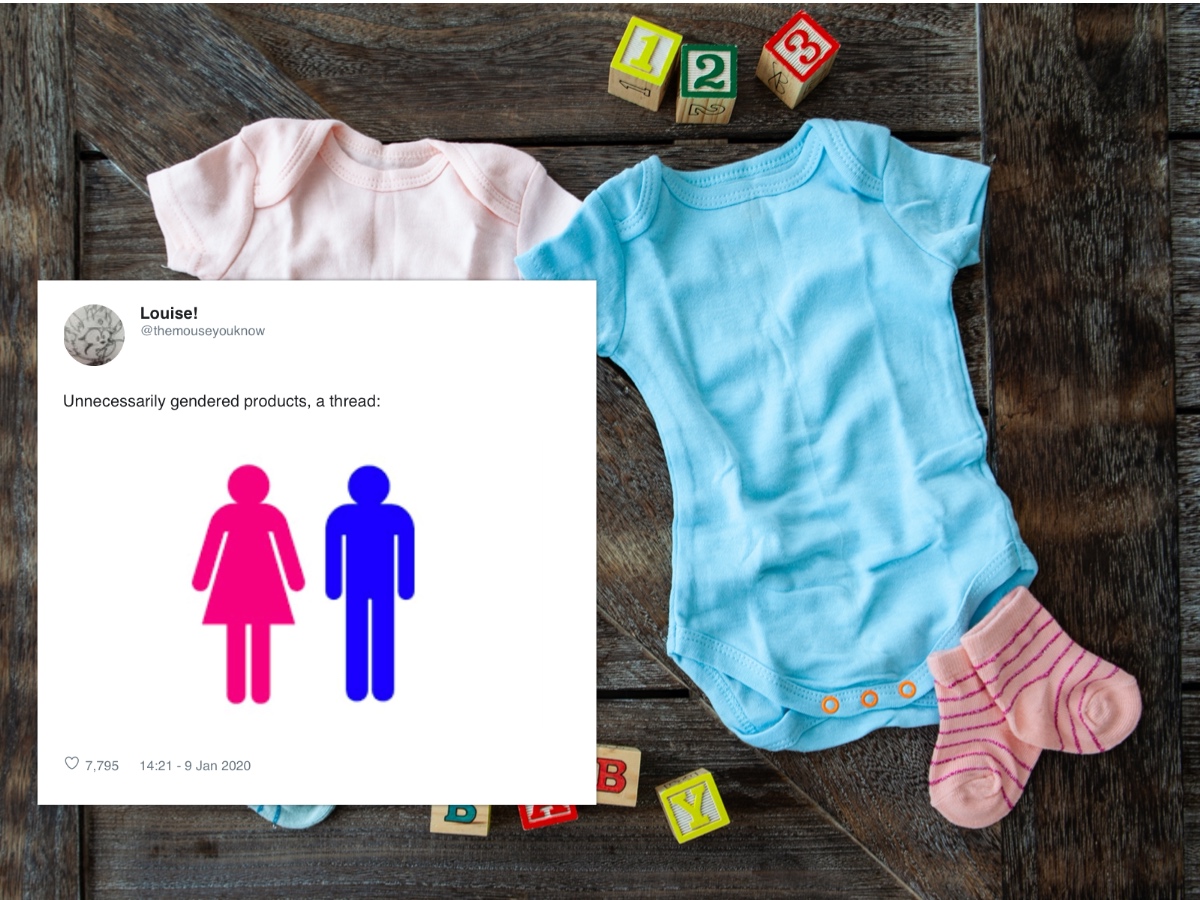A Twitter thread collating a bi-colourful array of products branded “for boys” and “for girls” has gone viral. (Stock photo via Elements Envato)
Pink for girls and blue boys is, for some reason, a colour coding rule that we all indirectly sign up for when assigned a gender at birth.
But these terms and conditions that, of course, nobody reads.
As societies gradually move away from the binary approach to gender and become both more accepting and better accommodating of trans and non-binary folk, we’re increasingly realising that it’s perfectly OK to like either colour regardless of your gender identity and sex.
And a Twitter thread has gone viral for making it glaringly obvious the outlandish ways that gendered expectations shape our lives.
In a string of tweets, the user rounds-up how different products are branded differently depending on the gender the company is selling towards.
Unnecessarily gendered products, a thread: pic.twitter.com/nsg7zQLKmI
— Louise! (@themouseyouknow) January 9, 2020
It starts off with the binary as old as time: grenades for boys, Jenga for girls.
“The man grenade bath blaster” pic.twitter.com/EaCcL1eiTP
— Louise! (@themouseyouknow) January 9, 2020
There’s then the two genders: Man, and apricot as well as bi(nary)noculars.
The other 2 genders Girl and North American. pic.twitter.com/7LVMCN3wUu
— Louise! (@themouseyouknow) January 9, 2020
And for those high-flying Christians, both a plane and bible just for you:
The boyble. pic.twitter.com/4KtA4619hu
— Louise! (@themouseyouknow) January 9, 2020
But don’t fret, ladies, whether you’re into contacting spirits from beyond the grave or aligning with the Holy Spirit, there’s a Ouija board and bible for you:
The bible for her. pic.twitter.com/Ntr9jMJWix
— Louise! (@themouseyouknow) January 9, 2020
In other words, as many Twitter users said, the thread just demonstrated the lengths that marketing will enforce gender binaries that, honestly, make no sense:
Tea. pic.twitter.com/YK06JQWhBl
— Louise! (@themouseyouknow) January 9, 2020
Some users even responded with their own examples of ‘gendered’ products, from the “guy nail care kit” to hammers and drills “but make it for women.” Kinder Eggs to fruit juice.
The pink and blue binary: A brief black and white history.
The pink blue colour divide has an elastic history, where, throughout the global north’s history, the divide isn’t as concrete as many people today may suspect.
Throughout the late 1800s, historians say, younger children would simply wear white. But the shift towards pink and blue happened gradually over centuries, shifting from the practical white dresses towards the pastels of the 19th century.
But, even then, the colours were not gender-specific. Only from around the 1940s did the ‘pink for girls, blue for boys’ manufacturing approach first be rolled out of conveyor belts and into stores.
